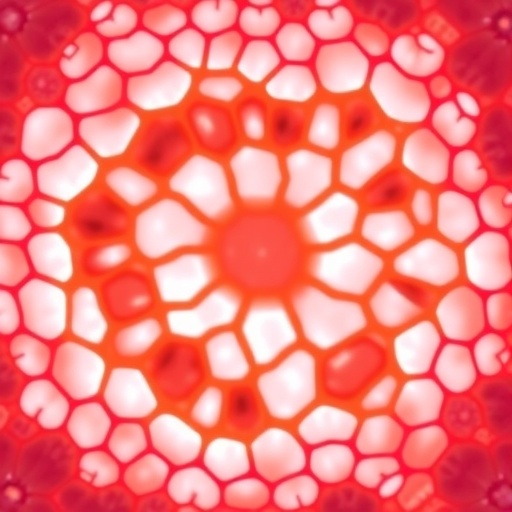
In the relentless quest to understand the intricate mechanisms underlying cancer progression, phenotypic plasticity has emerged as a central paradigm that reshapes our appreciation of tumor biology. This remarkable adaptability—where cancer cells dynamically shift their phenotypes in response to environmental cues—fuels not only tumor heterogeneity but also the processes of metastasis and therapy resistance. Recent scientific advances have highlighted the critical role of fetal-like transcriptional programs in fostering these plastic cell states, revealing a layer of developmental mimicry hijacked by malignant cells to survive and thrive. Yet, studying these fetal-like features has been hampered by the limitations of existing cancer models, which often fail to preserve the nuanced cellular states observed in vivo. In a groundbreaking development, researchers have now engineered a patient-derived organoid model that transcends these obstacles, providing an unprecedented window into the fetal-like plasticity that propels colorectal cancer (CRC) progression.
The study, spearheaded by Xiong, Xu, Gao, and colleagues, introduces a chemically defined organoid culture system capable of sustaining the long-term expansion of CRC cells while faithfully maintaining the fetal-like transcriptional programs integral to phenotypic plasticity. Organoids — three-dimensional cultures derived from patient tumor samples — have revolutionized cancer modeling by recapitulating tumor heterogeneity and microenvironmental interactions more authentically than traditional two-dimensional cultures. However, prior methodologies often lacked the biochemical precision to stabilize transient, developmental-like states in cancer cells, thus curtailing the study of plasticity-related phenomena. By optimizing chemical conditions to sustain these fetal-like features, the authors have crafted a robust platform that melds clinical relevance with molecular fidelity.
A central revelation from this model is the identification of a distinct oncogenic fetal-like state, aptly termed the OncoFetal State (OnFS). This cellular phenotype is enriched within advanced-stage colorectal tumors and is intricately linked to hallmark characteristics of phenotypic plasticity. Notably, the OnFS correlates with enhanced epithelial-mesenchymal plasticity—a process fundamental to the migration, invasion, and metastasis of cancer cells. This plasticity allows epithelial tumor cells to acquire mesenchymal-like properties and vice versa, thus permitting a flexible response to environmental pressures such as immune surveillance or chemotherapeutic assault.
.adsslot_bmSnWNjsiI{width:728px !important;height:90px !important;}
@media(max-width:1199px){ .adsslot_bmSnWNjsiI{width:468px !important;height:60px !important;}
}
@media(max-width:767px){ .adsslot_bmSnWNjsiI{width:320px !important;height:50px !important;}
}
ADVERTISEMENT
The experimental findings reveal that OnFS cells exhibit not only the transcriptional hallmarks reminiscent of fetal development but also functional properties that endow them with increased metastatic potential. This dual identity—balancing developmental programs and oncogenic traits—complicates treatment paradigms, as such cells display heightened resilience against conventional therapies. Resistance mechanisms may include altered drug uptake, evasion of apoptosis, or adaptive activation of survival pathways, highlighting the clinical challenge posed by phenotypic plasticity in aggressive cancers.
Crucially, dissecting the molecular circuitry sustaining the OnFS has illuminated the pivotal role of an interlinked signaling axis involving fibroblast growth factor 2 (FGF2) and the activator protein 1 (AP-1) transcription factor complex. FGF2, a potent growth and differentiation factor, engages receptor tyrosine kinases to activate downstream pathways that modulate gene expression. AP-1, comprising the JUN and FOS families, acts as a key transcriptional regulator orchestrating cell proliferation, differentiation, and stress responses. The study underscores that FGF2-AP-1 signaling is indispensable for the maintenance of OnFS transcriptional programs and, by extension, the associated plasticity driving tumor progression.
Mechanistically, FGF2 signaling initiates cascades that converge on AP-1-mediated gene regulation, sustaining the fetal-like state and enabling cells to traverse phenotypic boundaries with greater ease. This dependency on FGF2-AP-1 signaling presents a tantalizing therapeutic target: interventions that disrupt this pathway could selectively dismantle plastic cancer cell populations, thereby impeding metastatic dissemination and overcoming resistance. The organoid model offers an ideal system for preclinical evaluation of such targeted therapies, allowing researchers to monitor real-time dynamic changes in plasticity and treatment response.
Beyond elucidating fundamental cancer biology, this study addresses a crucial gap in cancer modeling technology. Previous patient-derived organoid systems often prioritized replicating tumor architecture or bulk cell survival, without preserving the temporal and developmental fluidity inherent to plasticity. By employing a chemically defined culture medium tailored to support fetal-like transcriptional networks, the researchers circumvented these obstacles, achieving a stable yet flexible in vitro environment. This methodological innovation enables prolonged culture periods without loss of phenotype, facilitating longitudinal studies of tumor evolution and therapy adaptation.
The implications of capturing fetal-like plasticity extend beyond colorectal cancer. Many solid tumors exploit developmental programs to modulate their behavior; hence, this organoid platform could serve as a blueprint for modeling plasticity across cancer types. Such cross-cancer applicability could accelerate discovery of universal plasticity drivers and foster the development of broadly effective anti-plasticity therapies, addressing tumor heterogeneity and therapy escape mechanisms that have long frustrated oncologists.
Additionally, the study sheds light on the relationship between cancer cell plasticity and the tumor microenvironment. Fetal-like programs often intersect with stromal signaling to create permissive niches for tumor growth and metastasis. Although the current organoid system is epithelium-centric, it affords opportunities to integrate stromal or immune components in co-culture, opening doors to multifaceted investigations of tumor ecology. Understanding how the OnFS influences and responds to microenvironmental signals will be pivotal in crafting holistic therapeutic strategies.
From a clinical perspective, the identification of the OnFS as a biomarker of advanced disease aggressiveness and therapeutic resistance holds promise for precision oncology. Liquid biopsy approaches or imaging modalities designed to detect signatures of OnFS could stratify patients at higher risk of metastasis or relapse, guiding treatment intensification or novel combination regimens. Moreover, monitoring OnFS dynamics throughout therapy may reveal critical windows for intervention when plasticity is most vulnerable.
Future research leveraging this organoid model might also interrogate the epigenetic underpinnings of OnFS plasticity. The fetal-like state likely entails extensive chromatin remodeling and DNA methylation changes, which enable cancer cells to access developmental gene networks. Epigenetic inhibitors, combined with blockade of FGF2-AP-1 signaling, could synergistically destabilize plastic phenotypes, a concept now testable in this well-characterized ex vivo system.
As the paradigm shifts toward appreciating cancer as an evolving and adaptable ecosystem, the ability to recapitulate and dissect fetal-like plasticity provides a critical vantage point. The work presented by Xiong and colleagues represents a tour de force in cancer modeling and biological insight, delivering both a potent new tool and mechanistic revelations with far-reaching therapeutic implications. By capturing the elusive OncoFetal State, this organoid platform stands poised to transform our capacity to understand and ultimately outmaneuver phenotypic plasticity—the cancer cell’s evolutionary ace.
In summary, the development of a patient-derived organoid model capable of preserving fetal-like features marks a watershed moment in colorectal cancer research. This chemically defined system illuminates the previously opaque realm of plasticity programs driving metastasis and therapy resistance. By pinpointing FGF2-AP-1 signaling as the molecular linchpin of the OncoFetal State, the study unveils novel avenues for therapeutic targeting. Through integrating developmental biology with oncology, this research not only deepens our grasp of tumor progression but also charts a promising path toward more effective and durable cancer treatments.
The impact of this study resonates beyond the lab, offering hope that sophisticated models of cancer plasticity can bridge the translational divide. As researchers worldwide adopt and refine such organoid platforms, the ability to predict, monitor, and counteract aggressive tumor behaviors rooted in developmental mimicry will vastly improve. This represents a bold stride forward in decoding cancer’s plastic nature, harnessing cutting-edge techniques to ultimately tip the balance in favor of patients facing colorectal cancer and, potentially, other malignancies driven by similar fetal-like plastic cell states.
Subject of Research: Colorectal cancer phenotypic plasticity and oncofetal transcriptional programs
Article Title: A patient-derived organoid model captures fetal-like plasticity in colorectal cancer
Article References:
Xiong, L., Xu, Y., Gao, Z. et al. A patient-derived organoid model captures fetal-like plasticity in colorectal cancer. Cell Res (2025). https://doi.org/10.1038/s41422-025-01139-y
Image Credits: AI Generated
Tags: advanced cancer modeling techniquescancer phenotypic plasticitycolorectal cancer researchdevelopmental mimicry in tumorsenvironmental cues in cancerfetal-like transcriptional programsinnovative cancer research methodslong-term cancer cell expansionpatient-derived organoidstherapy resistance in cancerthree-dimensional organoid culturestumor heterogeneity and metastasis



